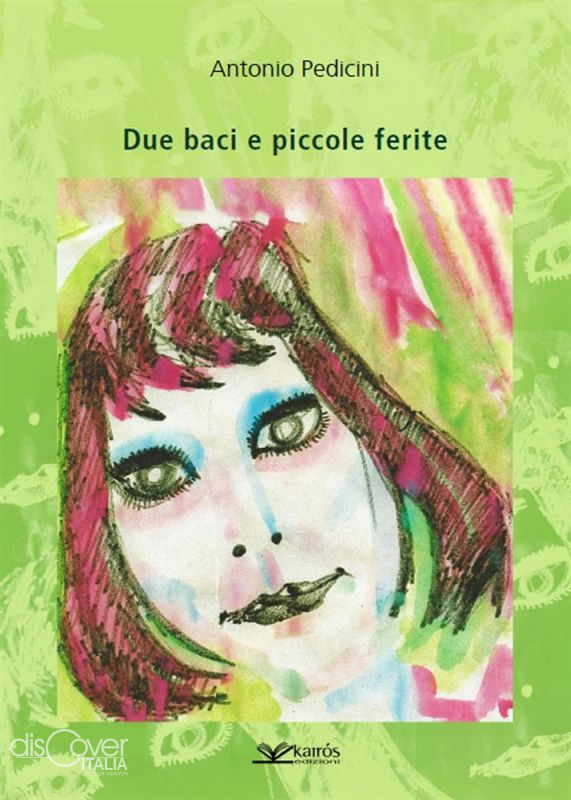
Ho una personalissima bibliografia portatile da viaggio (sulla rotta Ischia-Napoli e al contrario) che abita nella mia borsa, tra penne e matite: sono libri di medio-piccolo formato, li divoro rapidamente per curiosa passione, per ovviare alla routine del moto ondoso. Spazzano via l’afasia in caso di noia in agguato.
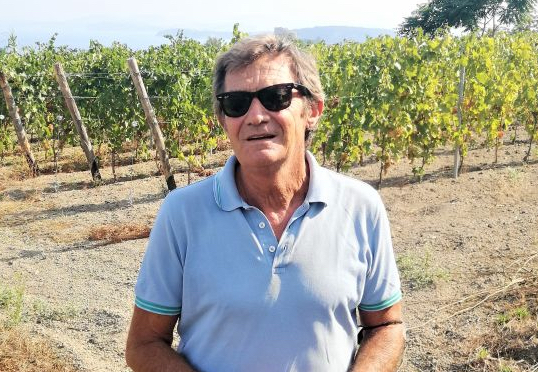
Each planted vine, when it sprouts, is a hymn to joy. It's like a phylogenetic alarm clock. It makes you vibrate. Gives you the chills. It leads us back to the roots, explains who we are. Summarize our evolution. Or at least it should.

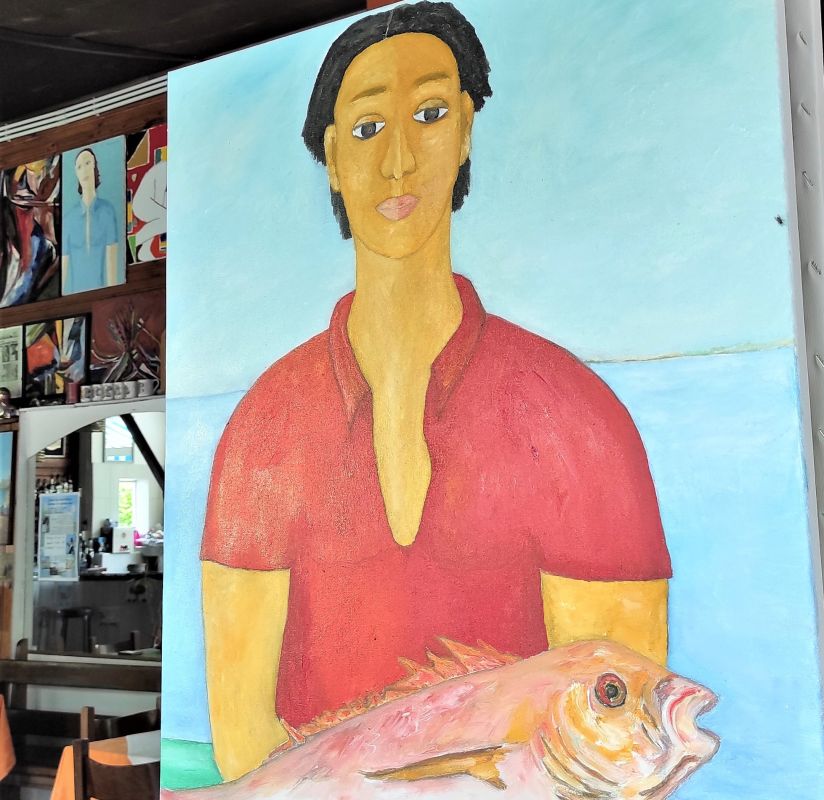
Mi sono dimenticato ancora una volta di chiedere perché il ristorante «Duilio» si chiama così. Potrei immaginare che il locale sia stato dedicato a un pugile molto famoso negli Anni Cinquanta e inizio Sessanta, Duilio Loi, del quale ricordo perfettamente la faccia filmica e la postura fotogenica, leggermente ingobbita nelle figurine dei «Campioni dello Sport» della Panini.
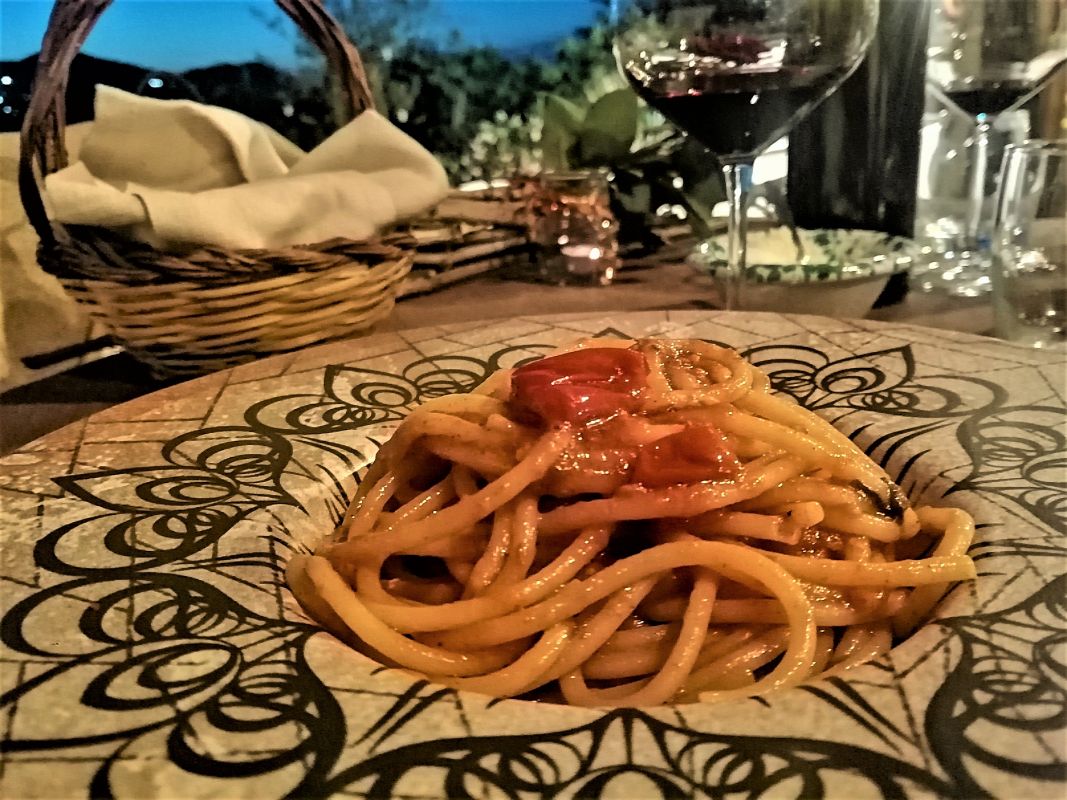
Il sentiero che sale dall’Arenella non è lungo, né troppo accidentato. Zompo rapido tra parracine di pietre laviche dell’Arso, rocce nere compatte che hanno compiuto 720 anni.
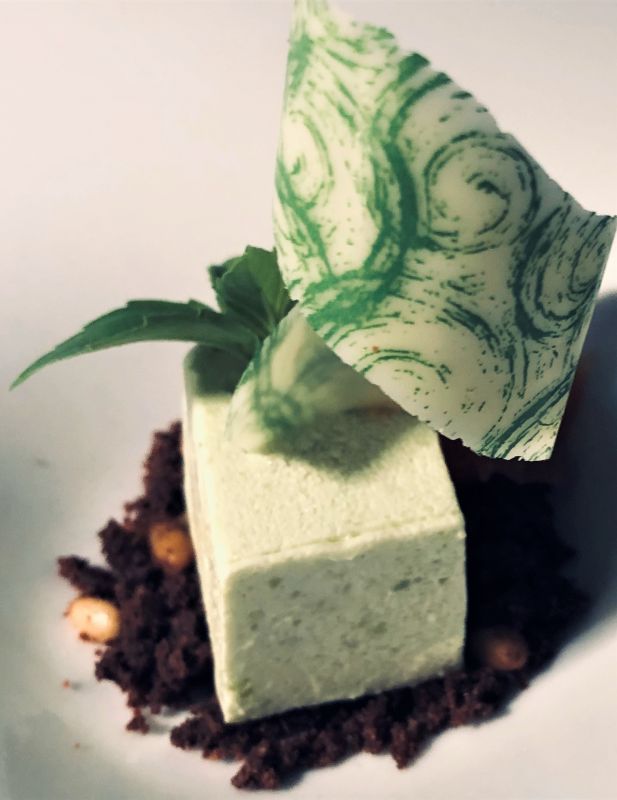
Quando torno sulla terrazza del «Miramare e Castello», albergo che ha nel nome la sintesi apologetica del bellomade in Ischia, immagino puntualmente di essere ospite sul ponte di uno yacht di lusso… poi sorrido e penso che la barca migliore è quella dell’amico. Eh!
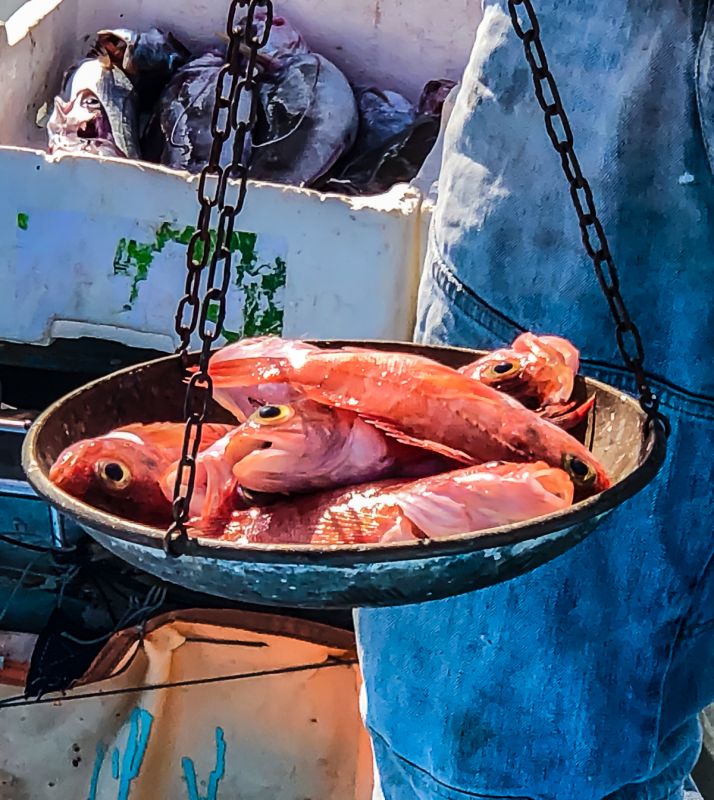
«Bubbessa». Vi dice niente? È una parola femminile. Ma è nata come un soprannome maschile, trasformato poi in un ampio appellativo familiare che ha il sapore e il potere del mare.

Mettiamola così, per cominciare: «La donna è un’isola». È una affermazione apodittica ed è il titolo in italiano di un bel lavoro, originale e a tratti bizzarro della scrittrice islandese Auður Ava Ólafsdóttir, una… isolana molto apprezzata tra Francia e Canada.
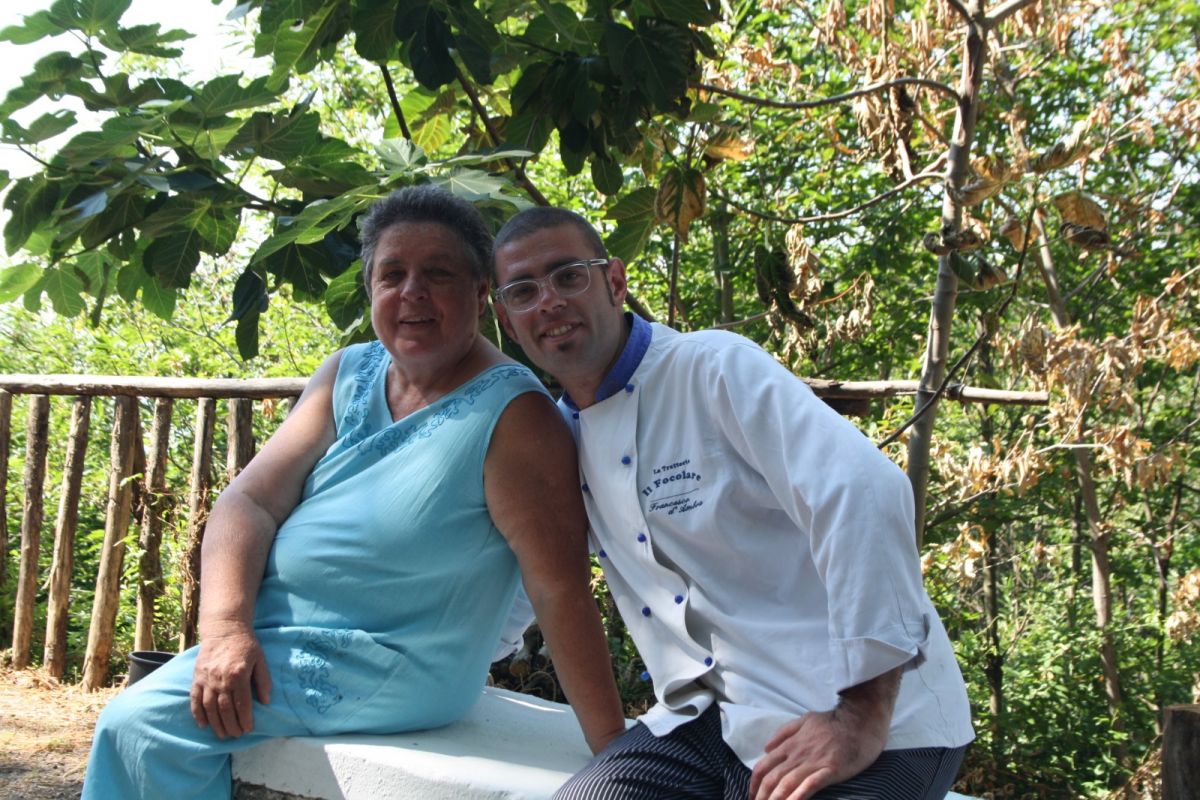
A volte avverto l’impulso di rivendicare l’autarchica genesi di questo spazio, non per ribellarmi alla (presunta) dittatura delle convenzioni, ma per giustificare le scelte più intime. Ci sono emozioni così struggenti e potenti, più alte delle onde gigantesche e indomabili che ho visto formarsi d’incanto lungo la costa oceanica di Nazaré in Portogallo, dalle quali o scappi via di corsa o ti impegni formidabilmente a controllarle, rendendole pubbliche. Provo la seconda chance.
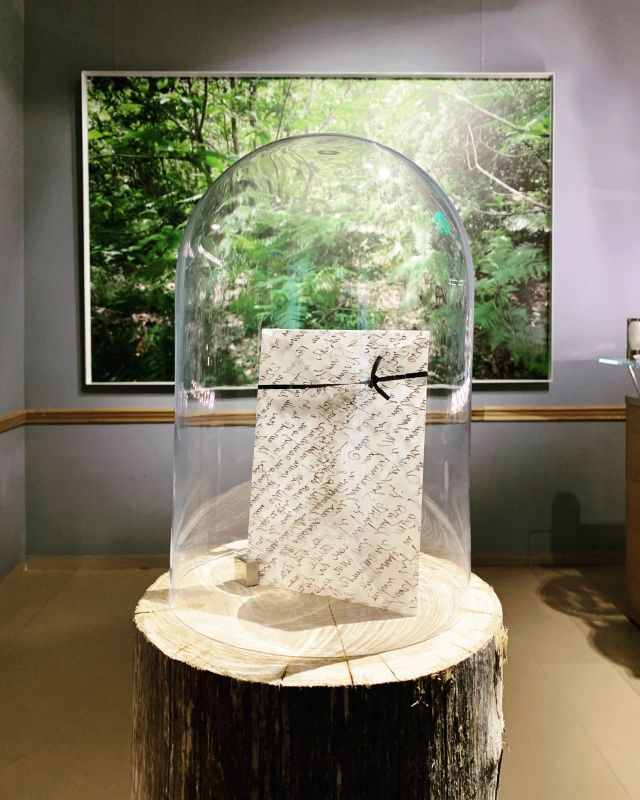
My friend Marco Cortese, architect,photographer, designer decided –from a while now-to leave an identification trace of his stylistic path.

I offer you something new: a micro story in several episodes linked to each other by the love for wine and more. I’ve never had a diary. That’s why I’m writing this. The first part is across borders. There may be the risk of running into the walls of raw nostalgia and elliptical digressions, but it's bearable. It amuses me. Because there will be no lack of portentous coincidences.
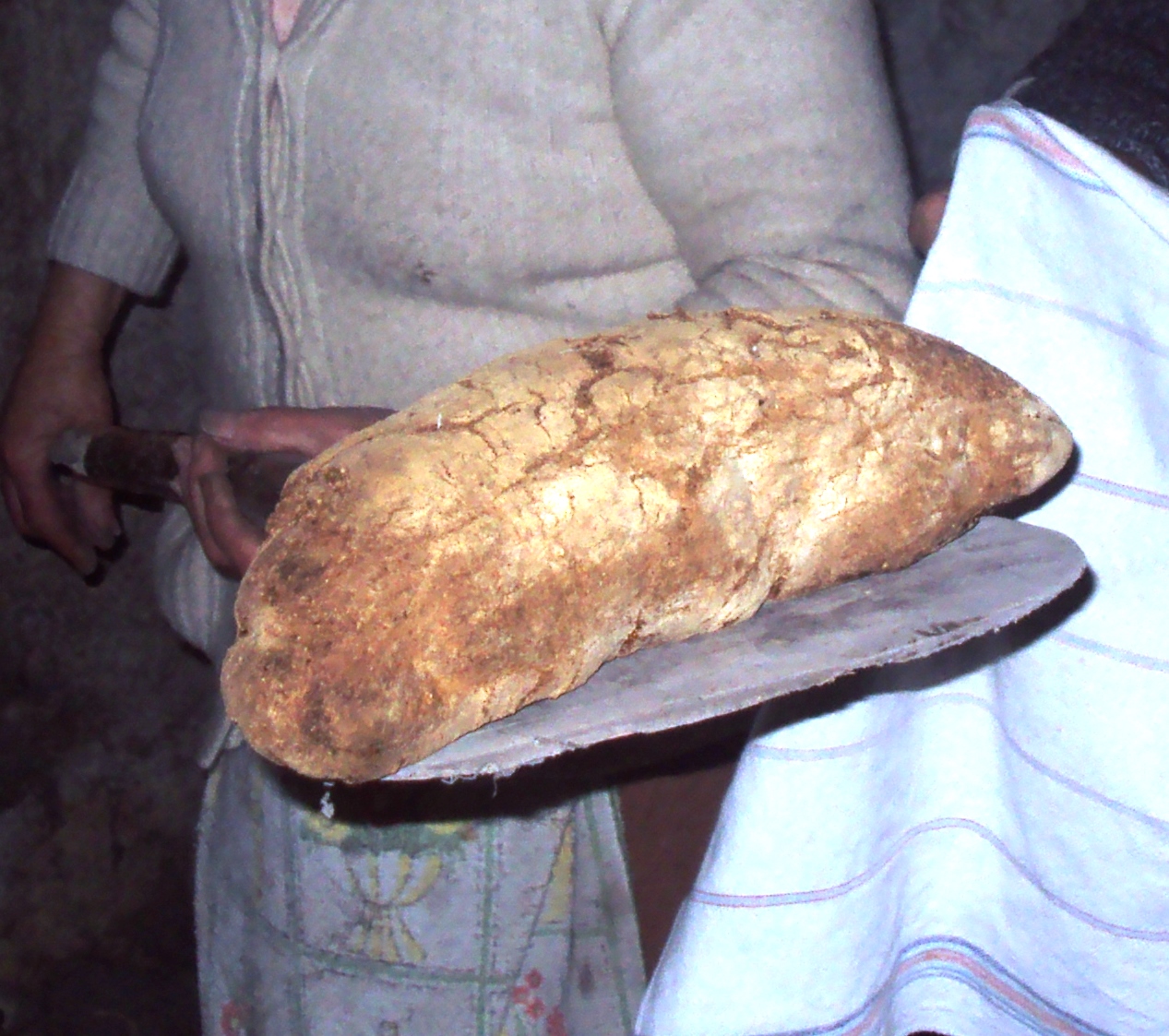
This time I look out of context. Apparently. I am recovering “something” from few years ago because the last of the two protagonists of this story passed away in November Twenty Twenty because of the love for his people: father Angelo Iacono, a priest. He joined his sister Pierina, not even too long after her. With them this story is over. Or not? For now I am proposing it again in the way I told you. With dedication.
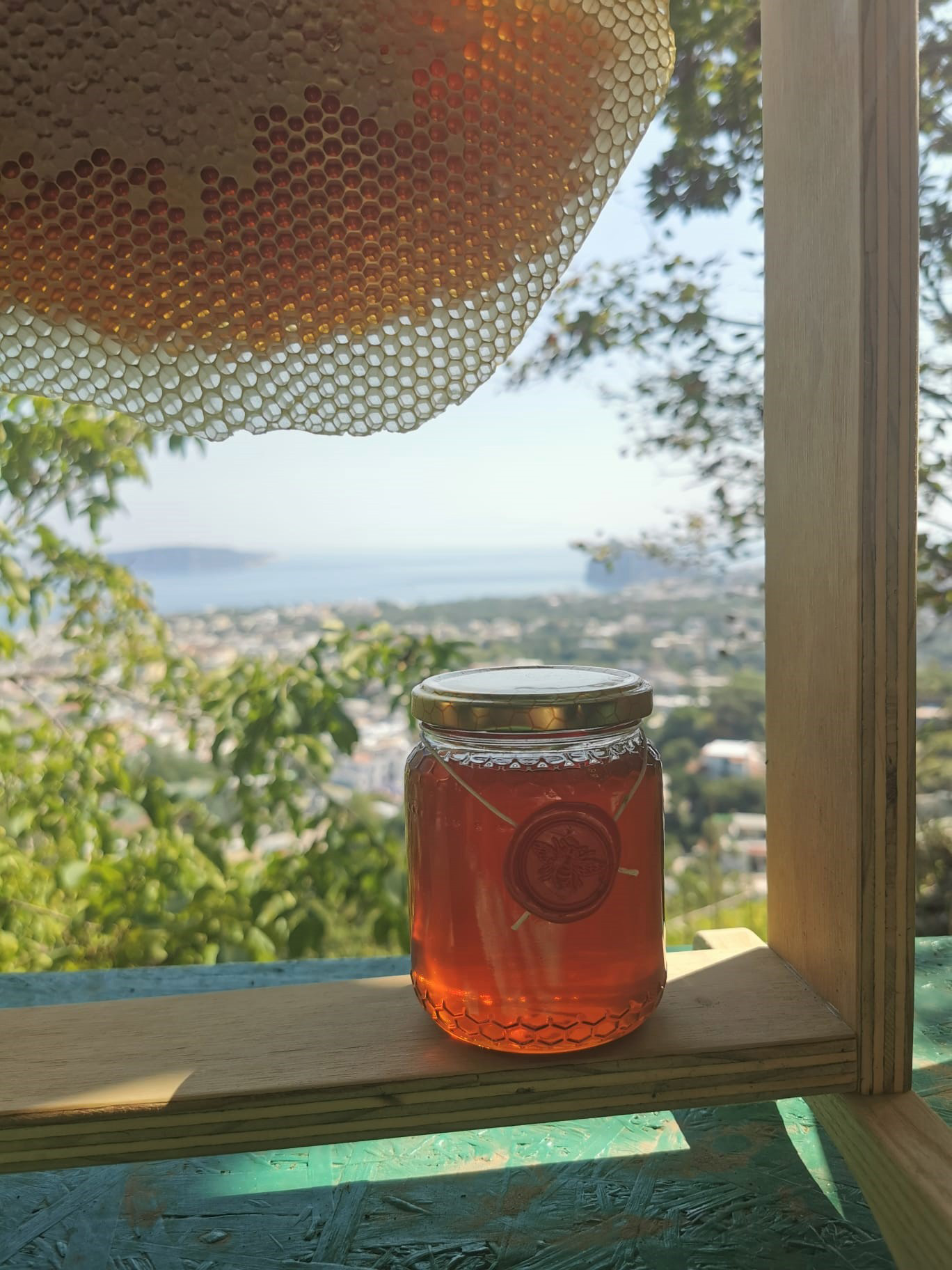
Heeey, what’s this, honey? Yes, it is. But this one is a little bit different : it’s a free one, it is wild. And it is proportional. But how? I am going to explain it to you: it is proportional to the landscape containing it. The less beauty you see around, the less honey you will have… Try to figure it out, make also an ideal circumnavigation.

It is a whirling breath, vibrant but soft and noble, rythmic, and it is not a banal noise: it comes from the kitchen, it is the sound of freshly shelled eggs and then quickly whisked by mum Iolanda. And it is an aperitif dance, the signal for papillas and pupils : “Rosà, they are preparing the mozzarella in carrozza for us!” A satisfied flash takes possession of Rosanna’s gaze.
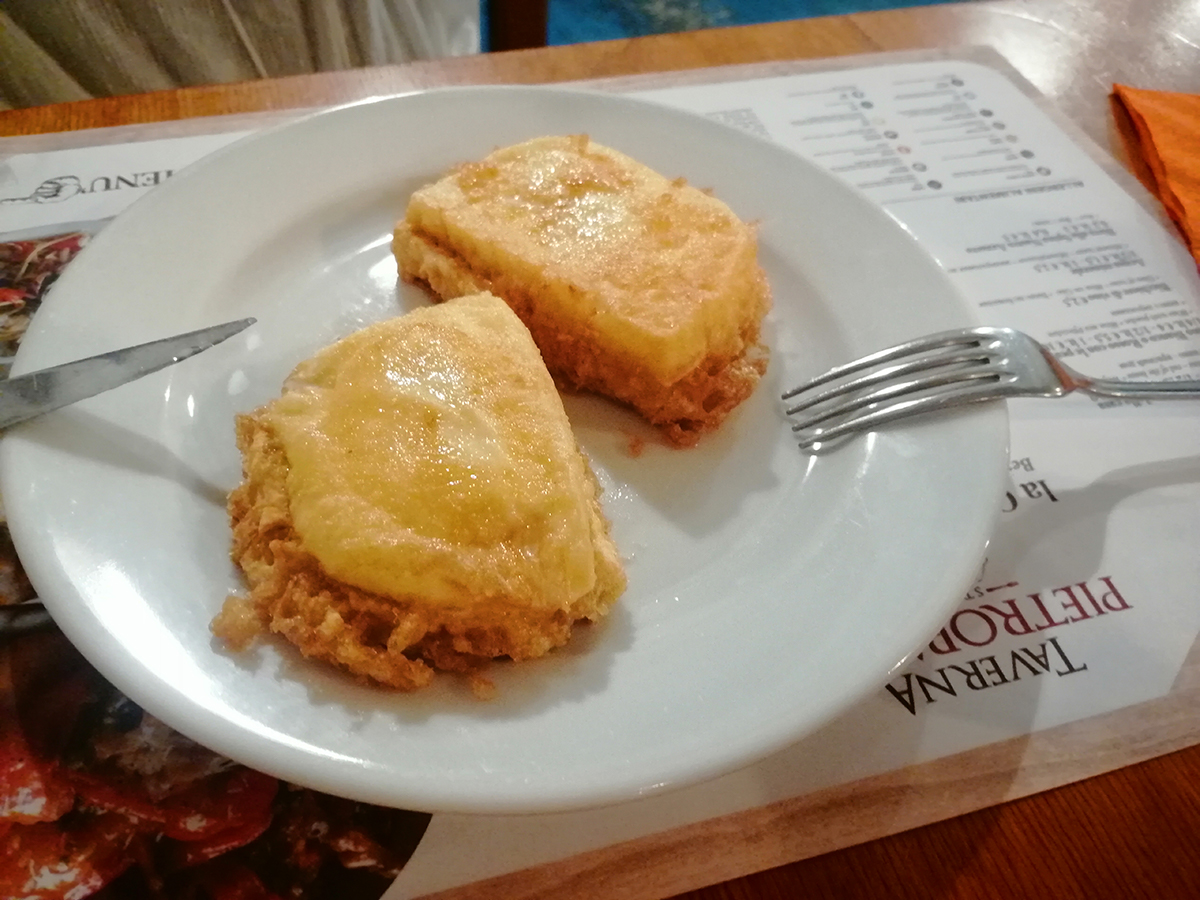
The bright and complicit golden envelop of the fior di latte cheese put with a voluptuous satisfaction on the slice of bread cooked on firewood, which is consistent, intense. The result makes a sprint, for its personality and character, with many specialties of the Mediterranean fried food. And it wins. And I still remember that in the last century the splendid keeper of the secrets of “Neapolitan Cuisine”, Jeanne Caróla Francesconi, made a ferocious rudeness. She dedicated herself with little desire to the description of the recipe: she wrote about “stale bread” and “sandwiches”, maybe under the influence of some rushed city’s feasts…
I remember it well. Eh no, a posthumous bollocking is needed, with all due respect. If we speak about this lady Mozzarella in Carrozza, we need to use capital letters. And, don’t you want to add that Rosalia, 18, accompanies them to the table with a generous flexibility and a smile that make you hope for the future? And the ulterior value is in the path of knowledge that Anna, 24, a cooker with an enthusiastic vocation has already started: the exemplary gestures make the humility of the ingredients triumph. Dad Leonardo Iacono enjoys it seemingly friendly: he is an excellent master! The carefully bread chosen and cut is enveloped the sizzle of the frying, proud of its aroma, until enhancing in the destiny compacted by the fire and the egg white, creating two “islands” on the plate. Dotted with some paper, boiling and light, they silence our late summer talks. And make the idiots of taste be quiet. Old and new ones. There are thousands of them.
My goodness, I am so hungry guys! After a blissful afternoon, spent playing in water balling up a foulard, and then drying myself on the sand of the Fumarole, the wild corner of the western part of Maronti beach, I marked the minutes - while waiting for 7 pm - like a child playing hide and seek.
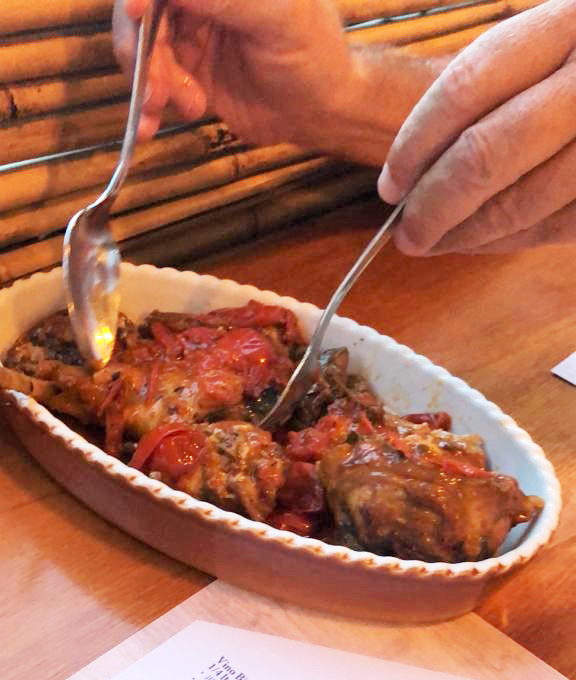
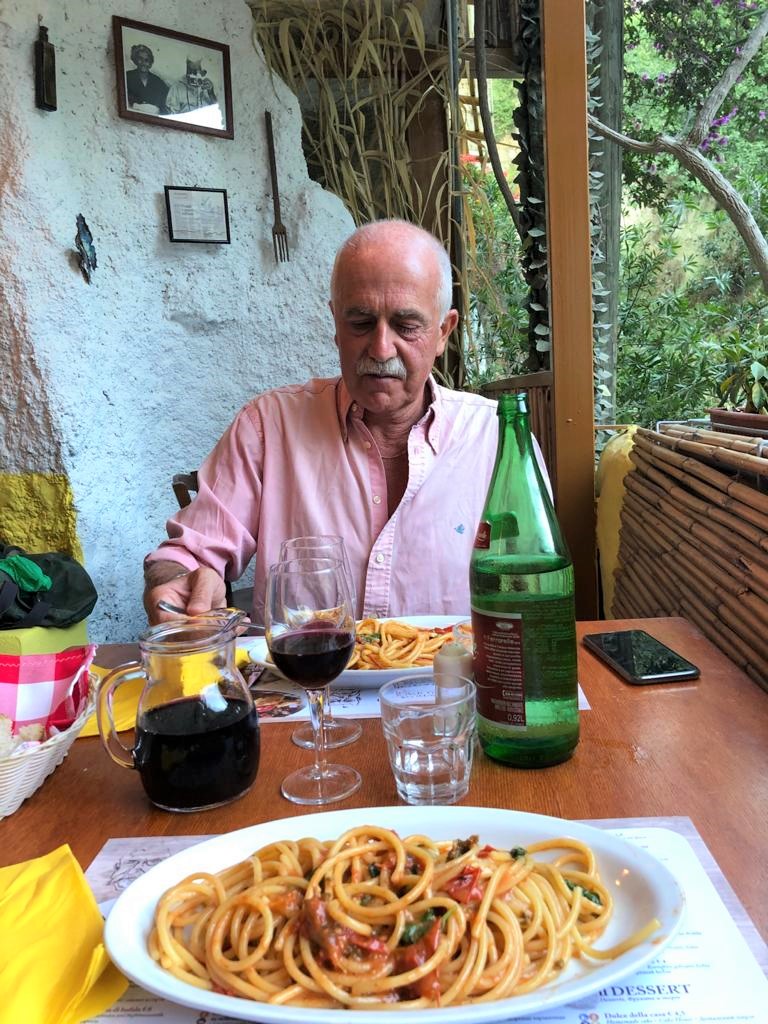
Here I am, finally, in Cavascura for another appointment of the season at “Taverna Pietropaolo – Stalino” (phone: 081.905870 – 320.6341345), the cave of the cyclical history of appetite and happiness, of naturalness preserved in the form of a trattoria, which I have elected this year at the top of the personal eating ranking. The reason? More than one.
And then, it is not comparable: except for spaghetti with garlic and oil (and fresh chilly), or bucatini; I have always used my hands. I enjoyed, greasy hands, between mopping my plate with bread and dunking, in a sancta sanctorum of minimalist and abundant preparations, perfect therefore: sautéed mussels, clams and razor clams; rabbit sauce; fried poor fish and crunchy salads, to the top of optimism, zeppole… covered with sugar.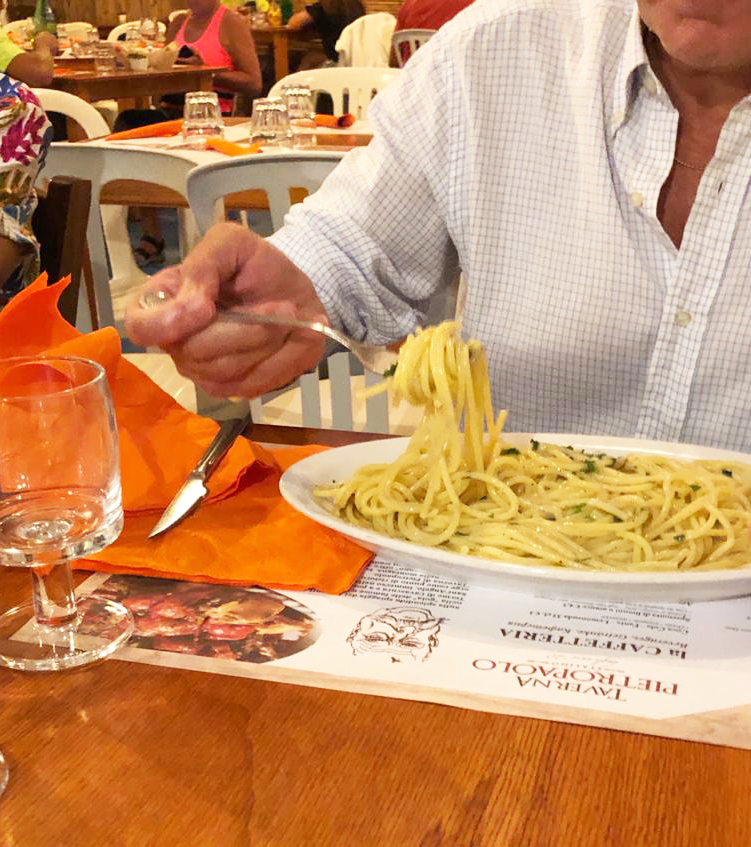
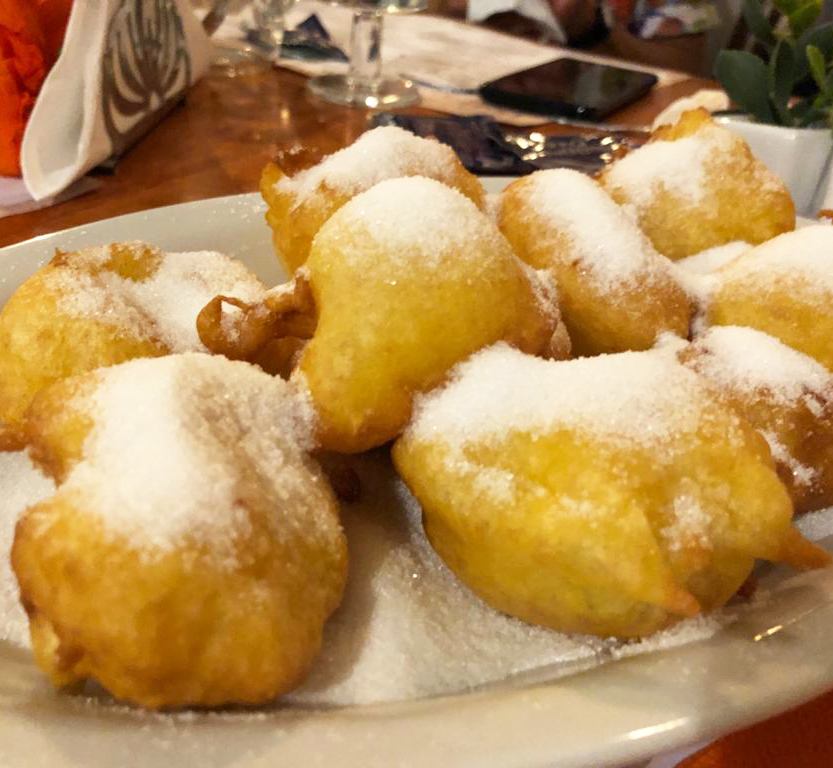 Of course, everybody knows about this place, it is one of the myths of Ischia incorporated in the volcano and in the hyper thermal waters. As soon as you take a seat, your sixth sense guides and bewitches you. The interior atmosphere is governed by Vincenzo, who was born in 1993 but is an extraordinary professional, an already veteran who moves between the walls with historic pictures, almost ancestral memories, addressing the regular customers with a strong and aware quality: the genuine welcome. Friendly and elegant, you can see that he is citizen of the world: he studied at the glorious Ischia Hotel Institute… Enzo obtained a diploma with the highest score, writing a thesis on the beautiful book written by my friend Angelo conte and entitled: “Il Principe di Cavascur” (The Prince of Cavascura) which is a hymn to the uniqueness of a land which for Gianni Mura was Cappadocia, mixed with sea and minerals, dolmens, gorges and ravines.
Of course, everybody knows about this place, it is one of the myths of Ischia incorporated in the volcano and in the hyper thermal waters. As soon as you take a seat, your sixth sense guides and bewitches you. The interior atmosphere is governed by Vincenzo, who was born in 1993 but is an extraordinary professional, an already veteran who moves between the walls with historic pictures, almost ancestral memories, addressing the regular customers with a strong and aware quality: the genuine welcome. Friendly and elegant, you can see that he is citizen of the world: he studied at the glorious Ischia Hotel Institute… Enzo obtained a diploma with the highest score, writing a thesis on the beautiful book written by my friend Angelo conte and entitled: “Il Principe di Cavascur” (The Prince of Cavascura) which is a hymn to the uniqueness of a land which for Gianni Mura was Cappadocia, mixed with sea and minerals, dolmens, gorges and ravines.
 Enzo speaks many languages, in winter he goes abroad to improve his job, as it was in the past. He has something more. I wish Antonio, the younger brother, to really take him as an example… That’s it. The whole Iacono family is reassuring and instills hope.
Enzo speaks many languages, in winter he goes abroad to improve his job, as it was in the past. He has something more. I wish Antonio, the younger brother, to really take him as an example… That’s it. The whole Iacono family is reassuring and instills hope.
Although I have a strong worry: how is it possible that in Cavascura you need to go by quad, an off-road vehicle, four-by-four, motocross and so on? Let’s move on, let’s try to keep these vehicles a little further away…
For the rest, the Taverna is as you want it: a literary environment for the subtle minds; a popular destination for the lovers of simplicity and the fanatics of homemade tastes; a confirmation of identity for the narrators of their feeling satisfied globetrotter: a fertile slice of polyglotism that remembers the “Flower Children”, artists and the intellectuals. And it makes you meet, as if nothing happened, because there is no need to hide , the VIPs and the new rich of this Promised Land; the lovers tout-court and on the run; and the lovers of the resilient insularity that adore the good times of the past, although falling into, sometimes, a river of clichés.
I am still here, with Rosanna, in the fresco animated by the loving memory, illuminated by Pietropaolo fable who had the mustache and that frowned Stalin face which earned him a gigantic nickname - swimming in an ocean of mountain hormones - and two wives, Angelina and Amalia. Staline soon became a Super Name, of which the whole world and the human bellies were fed and then filled the memories with a fulfilling experience. Which makes you dream and return. At the beginning, in the amazing den of pleasure, rabbits raised in ditches were celebrated. And I am writing another book about this… And then there was also the frugal antipasto, with salami made with their own hands, followed by "spaghetti" for the customers, who were German, yesterday as well as today. Even those who continue to drink cappuccino in front of a plate of pasta. Damn…
Oh well. Everything started in 1929. By the way, they accept reservations for the Centenary.

 Hey, did you know that, when you grow them high, very high, the tomatoes with a teardrop end (pomodori con il pizzo) cannot see water? I don’t care about what farmers do elsewhere, for example on the Vesuvian dorsals: I guarantee , for what I know of the agricultural practice, which is common on the Ischia summit, the Epomeo, which is surrounded by vineyards, orchards and galactic vegetable gardens. In these parts, you pick the tomatoes, take them to the kitchen, you slightly (but not even that) wash them; you split them in half, you season them (a little), place them on bread cut into thick and wide slices and, if you like, toasted; between rubbed garlic, white onion and plenty of basil. Here we are: the strong colours, the nibbly consistency and the sweetness celebrating for you, even before biting. So, what? Come on! Go for a post-afternoon feast. Call them, if you want, mountain bruschetta.
Hey, did you know that, when you grow them high, very high, the tomatoes with a teardrop end (pomodori con il pizzo) cannot see water? I don’t care about what farmers do elsewhere, for example on the Vesuvian dorsals: I guarantee , for what I know of the agricultural practice, which is common on the Ischia summit, the Epomeo, which is surrounded by vineyards, orchards and galactic vegetable gardens. In these parts, you pick the tomatoes, take them to the kitchen, you slightly (but not even that) wash them; you split them in half, you season them (a little), place them on bread cut into thick and wide slices and, if you like, toasted; between rubbed garlic, white onion and plenty of basil. Here we are: the strong colours, the nibbly consistency and the sweetness celebrating for you, even before biting. So, what? Come on! Go for a post-afternoon feast. Call them, if you want, mountain bruschetta.
The backstory is that the trek what not planned. We decided - with Fedra and Antea- authors of these and many other photos - at the last moment, because the idea what to explore Piano Liguori, on the Sirocco coast.
And instead, the Epomeo sunset has teased us, to conquer afte the not short climb, to snort in harmony, reaching to only insular place where you do a pirouette, smile and see the whole paradise (pretending to ignore the crap appearing here and there on the horizon). The blow of Nature is incredible, the dense forest vegetation backlighting the Falanga is dazzling to the west; the mountaineering challenge to the north, of Capo dell’Uomo surrounded by white clays rich in fossils, is a dream; the perspective of the sea to the south is dotted by the buzzards flying between the boiling air flows. While the retreat and the small church of Santu Nicola that are at your feet remind you of the gift of silence, and that there has been a miracle: those which roam, hunting in the September sky are the buzzards escaped from the brutal fire which, at the beginning of August 2017, devastated the vertical of Forio, from Montecorvo, attacking also the Frassitelli. Thank God.
Speaking about animals, along the uphill path - the mule track of the good times - a kitten called Cip (with a collar) literally jumped suddenly on Fedra’s shoulders to play, purring, huh, huh, after a fake ambush… It waited for us on the way back, and it decided to accompany us for a stretch, zigzagging between our legs. So cute. For a few minutes we thought it was lost. But no, it lives there, in the “Porta di Agartha” which is also… a meeting place for seekers of Chthonic mysteries.
Okay, we return to the top of Epomeo. And totomatoes, princes reigning in the tuff. “I water the plants a couple of times, only after having planted in the ground”, Then, they look for water on their own!”. The dawning dew and the brackish humidity which does a long trip before laying down, marry… with the green thumb.
 This quote is by Fiorenzo Mattera, who is here, in “La Grotta da Fiore” (it is more than a restaurant, and it is open until November - phone: 339.1654739 and 368.559916) to continue with his family the heroic mission of Orlando Fiore Trofa and Maria Nocera. Fiore did it all by himself, it was 1965, and he dug by hand the cave connecting the southern and northern sides, which are thirty steps below the blue extremity of Ischia, at 778 meters on the shoreline. Visionary and brilliant.
This quote is by Fiorenzo Mattera, who is here, in “La Grotta da Fiore” (it is more than a restaurant, and it is open until November - phone: 339.1654739 and 368.559916) to continue with his family the heroic mission of Orlando Fiore Trofa and Maria Nocera. Fiore did it all by himself, it was 1965, and he dug by hand the cave connecting the southern and northern sides, which are thirty steps below the blue extremity of Ischia, at 778 meters on the shoreline. Visionary and brilliant.
Fiore’s daughters, Teresa Trofa (in the kitchen) e Fiorella Trofa (in the dining room), have around them a court of brilliant young people, as well as Fiorezo: Antonio Mattera, Ursula Mattera, Cesare Mattera. I repeat for all of them this surname, deeply rooted between the hilly districts. As well as Trofa, which is probably more exotic: I would like it to be derived from τροφή (trofì) that means “food” in Greek, but it is not excluded that it is linked to the Neapolitan noun indicating a shrub, “trofa” if I remember correctly. Maybe, otherwise, it has Lusitanian origins, who knows. The Trofa family travelled around the world, in Algeria as well, and such a long time has passed…
Fiorenzo studied at the Hotel school, when the principal was Giuliana D’Avino and- we found it out together, revealing ourselves, by insisting and repeating so much that “your face is familiar to me” - and he was a student, no less, at one my courses as an expert in gastronomic Culture. Few yeas ago, but not too many. Fiorenzo and the others cultivate at Pietra dell’Acqua (but the property is really extensive: five hectares nearby) a demanding plot: “I have done the second tomatoes seeding at the beginning of August, and here they are, ready, pretty tough and tasty, dry: so, are bruschetta yummy?”
 Antonio tells me that “finally the Germans are back”. This means that the season restarts with the lovers of the rarefied atmospheres up here, of the glass of wine, of the archaic enjoyment of the Grand Tour. Cesare, in the meantime, writes by hand some notes for me, taking care of the calligraphy…
Antonio tells me that “finally the Germans are back”. This means that the season restarts with the lovers of the rarefied atmospheres up here, of the glass of wine, of the archaic enjoyment of the Grand Tour. Cesare, in the meantime, writes by hand some notes for me, taking care of the calligraphy…
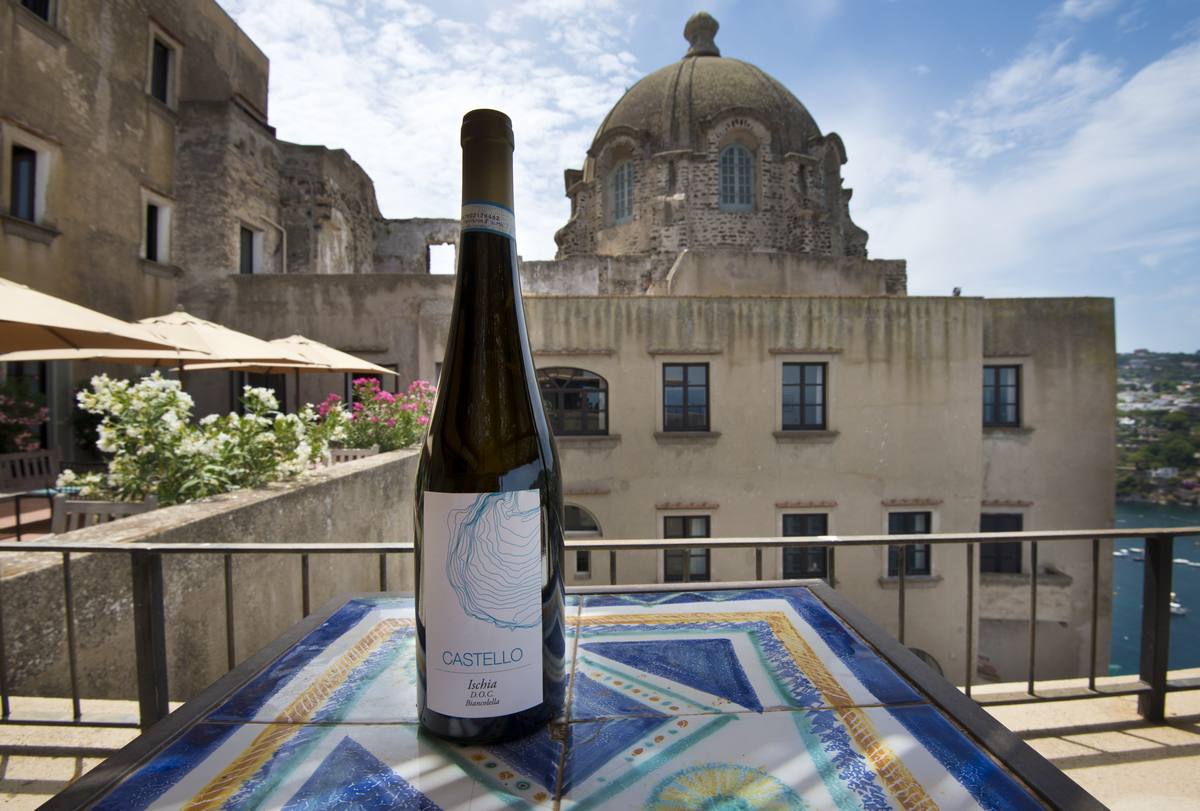
I am photographing the bottle of “Castello” uncorked for a while, now in the late night, placing it on the parapet that faces the majestic dome of the Church of Immacolata.
The label, which shows the isoipse of the volcanic cone which then became the insula minor, the Aragonese Castle, is like a map of the escalation of pure fascination which embraces me now, at the beginning of September.

 The variation on the theme are endless. Flour and clouds; semolina, loaves mother and father yeasts, and long or strange rising; risen of unrisen doughs; wood fired, gas, electric ovens; and then, lightness, humidity and elasticity; rain, salt and sun… And, again, low and high; condiments and toppings, stuffing, crusts, canotti pizza, fried food, mozzarella and …rip-offs.
The variation on the theme are endless. Flour and clouds; semolina, loaves mother and father yeasts, and long or strange rising; risen of unrisen doughs; wood fired, gas, electric ovens; and then, lightness, humidity and elasticity; rain, salt and sun… And, again, low and high; condiments and toppings, stuffing, crusts, canotti pizza, fried food, mozzarella and …rip-offs.
Pizza is synonymous with globalisation, naturally, like heating, homologation, high finance and the hundred so rich “scroungers” guiding he Earth hoping that it won’t crash.
The royal pizza- the queen- is a food of which you can’t do without: it is omnipresent, it is a material and immaterial good, it is a fine business, a mental landing, a nucleus of biased or peaceful discussion; a stomach filler and a stomachache and a a collective enjoyment, public or private (when there is the take away or the delivery)
At the end of a long itinerary among the “places” where pizza is prepared, in Ischia, I thought that I could draw up a small service guide, but the intention has melted: by itself - into thin air. Everything, or almost, wrong and to do again, citing Ginettaccio Bartali and not Paolo Conte…
I go in order, let’s talk about the “places” to go. The trend is consolidated: restaurant- grill- pizzeria. Antipasti and big antipasti, usual dishes, choice of meats and then galore “margherita”. The tryptich is served for the most of the suggestions, a remedy of every premise and gustatory promise. An alternative? Restaurant (with a slightly innovative menu) and pizzeria. Finally, the classic Neapolitan style: pizzeria and deli, maybe with a rotisserie. Anyway, let’s mix all these solutions and ask ourselves, in the end: “Was the pizza good?”
I have already anticipated the result: in this period, it is not worth it, I suspend the judgement. I have always overpaid (the bill) for pseudo-pizzas that don’t deserve to be remembered, especially in an approximative or even awful hospitality context.
“Black cross”, as Rosanna says… who is an expert on this.
Except in a couple of cases, forgetting those (the majority) where I will not return with a light heart.
The first, in chronologic order, is the Restaurant “Al Vecchio Capannaccio»” (on the Borbonica road, Via Baiola, in Forio - tel: 081.987571), which for a year has completed an interesting restyling, with an inviting tavern (‘A Cantina, but it is necessary to adjust the aphaeresis put inside-out) which welcomes whoever wants a guaranteed privacy: I like it. Here, after mixed successes, I found a “Pizza Vesuvio”, really nice and convincing, with only one partial imperfection at the disc base, a small scent of oil and charcoal, triggered by the dragging on the refractory. For the rest, I enjoyed it, observing with satisfaction the organisation in the service. The “Fried Calzone” is to be re-judged, potentially: no at the top, but not that bad either, so, forgiven.
The second fixed point is “La Rosa dei Venti”, a restaurant on the hills of Via Testa in Barano (tel. 081.902297) with a not average landscape of the Gulf. Here the undisputed master of pizza is Mario Buono, who has studied a lot, worked hard, and has kept his humble smile that is a sign of professionalism, although - by now - he knows a lot, directing himself on a top road: he has chosen the glamour and gourmet side. It is not easy to make fireworks, if you are not harsh with the selection of products, in terms of obsessive attention.
I have carelessly excluded a pizza that is the equivalent of a meal and leaves you that pinch of hunger, despite the kilometric composition: it is the “Nerano” (picture above), with zucchini cream, pumpkin flower, zucchini chips, tomato ketchup, provola cheese poured over, wafer of Grana Padano and Provolone del Monaco flakes. And then? Even a double cooking, fried and then baked again in the oven, and served on the cutting board. Let’s say that I took on the challenge, and Mario answered me as an expert author, although with some temptation in the froufrou ornament. The price? 14 euros. Quite right.
A curious final consideration. From Vesuvio to Nerano, in the pizza names, I find a multitude of toponyms of… foreign indications. I want to provoke. And what if we made Pizza Schiappone, Pizza Borbonica and Calzone Spalatriello? The “Ischia” pizza already exists, somewhere… Ah, Ah, what a provincial I am. What do you think?
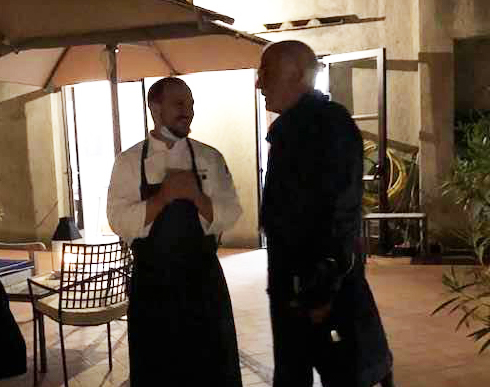
Yes, I know, with this title I risk a blasphemy. I probably look irreverent, but I like remembering one of the most famous Ischia legends which, riding the true story of an epochal friendship, tells of the secret love between Michelangelo Buonarroti, the genius of the Sistine Chapel, and the poetess Vittoria Colonna, Marquise of Pescara.
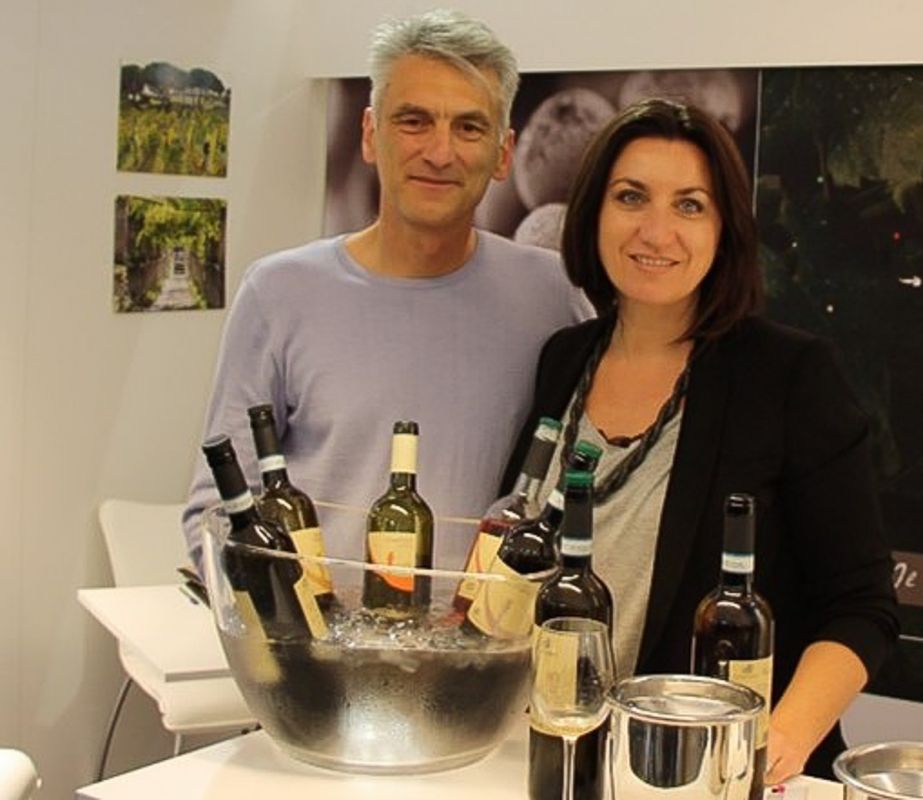
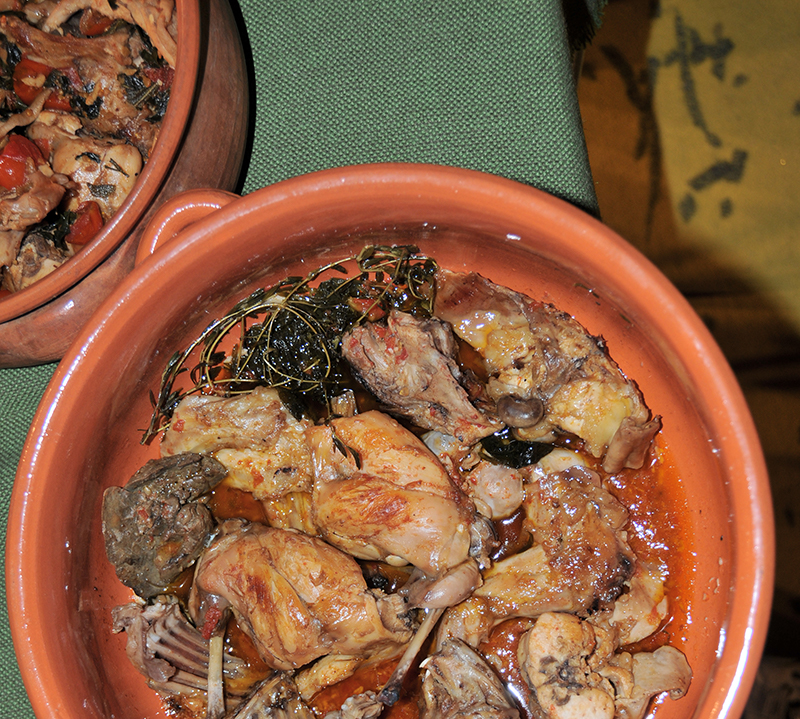 Rabbits here, rabbits there. It’s easy to say “Ischia style rabbit”, a totemic dish, an identity recipe. To the test - in a trattoria or in a restaurant- the disappointments exceed the satisfactions. The chefs’ presumption deluding themselves that they cook it “following the tradition” is too overused. Let me clarify: everyone is free to put on the table their very own personal “traditional recipe”. But the crucial point is, not only reserved to the raw material, too often underestimated in the fast orgy of the preparations for the tourist crowds; but, obviously, to the cooking methods.
Rabbits here, rabbits there. It’s easy to say “Ischia style rabbit”, a totemic dish, an identity recipe. To the test - in a trattoria or in a restaurant- the disappointments exceed the satisfactions. The chefs’ presumption deluding themselves that they cook it “following the tradition” is too overused. Let me clarify: everyone is free to put on the table their very own personal “traditional recipe”. But the crucial point is, not only reserved to the raw material, too often underestimated in the fast orgy of the preparations for the tourist crowds; but, obviously, to the cooking methods.
But what is the rule ? The rabbit, not too large in size, has to be cut into ten pieces, then it must be browned in the pan (the sartana), with great care and turn the pieces from a side to another. Do not scorch it and do not let the pieces dry, obviously. Move it in the terracotta saucepan where it cooks, for half an hour, with a whole head of garlic and with uniform heat and humidity, together with a glass of white wine (to simmer); then some cherry tomatoes and a little tomato purée. The entrails, the “mbrugliatelli” wrapped in parsley, and the liver need to be added at the end of the browning. The sauce, which will be creamy, will season the bucatini pasta. I allow you only a variation for the pasta: the zitoni lisci, or cutcandele. We can also add a sprinkling of well matured Parmigiano Reggiano, not Pecorino. Some chili pepper? No.
You might say: “but what is the innovation?” Simple: you have to get the herb which gives he dish the fresh natural minerality: the piperna, which is the wild thyme. There are people who replace it with basil or confuse it - it really is a horror! - with marjoram, creating distortions on the ancestral particularity of the main condiment. Rosmary is banned as well, in every way.
The true piperna grows on the “parracine”, the sunny and slightly salted drywalls, and slides down from the summit of the tuffaeous stones that have been set without mortar: they are rustic artworks which, containing terraces and embankments, guarantee the drainage to the plants and the unique perfumed quantity of our aromatic essence. The microclimatic conditions, to obtain the perfect piperna, are mainly on the west side of Ischia, the ridges - not too barren - of the peak of the Epomeo, between Frassitelli and Montecorvo, Panza and Forio. ut it also made its way through the winding south-east of Piano Liguori, San Pancrazio, Grotte di Terra, upper Campagnano.
These are, after all, the areas where the rare wild rabbit is hunted, descendent of the one appeared three thousand years ago with the Phoenicians: they were splendid navigators who brought with them, on the long-distance boats, couples of these rabbits (they are not rodents!) and then freed them in the landing islands and along the coasts where, returning after months, they caught again them multiplied in a considerable number, thanks to their prolificacy.
Fed with branches and leaves, the rabbit is also bred in the mythical rabbit hutches: in the surroundings of which the piperna also grows spontaneously and, often, is an integral part of the primordial diet of the rabbit itself. This way, we assist to a virtuous circuit of double flavoring of the meats, before and during cooking. How many aspirant rabbit gourmet know this secret? And they know, moreover, that it is not necessary to overdo with tomato, as I said before, or that there is an abyssal difference between the use of sweet white onion and the more canonical unpeeled garlic?
In short, this totem and bulwark eaten - and not crazy!” - as well as an extraordinary insular dish, it deserves a sort of necessary respect. At least to honor its ritual function (festivity food; spearhead of the barter; certifier of comparison agreements and promise of marriage). Therefore, careful: not everyone can define as “Ischia style” the personal interpretation, making a glorious, social, anthropologically important history perish. We saw it some time ago in Masterchef, where even terrifying, sacrilegious peppers sprouted.
The moment of truth will be, however, the one of the combination with the island’s DOC wine: Biancolella or Per’ ‘e palummo, better in a rosé version. If it doesn’t work, the dish is wrong: it is an irrefutable test.
I have been lucky on two occasions, among many. Th first “Ischia style rabbit” was signed, chronologically, by Giuseppe Trani at his farmhouse, the Torre di Mezzo (on the high hills of Campagnano - tel. 081.19043172), which you can reach after a beautiful beneficial trek.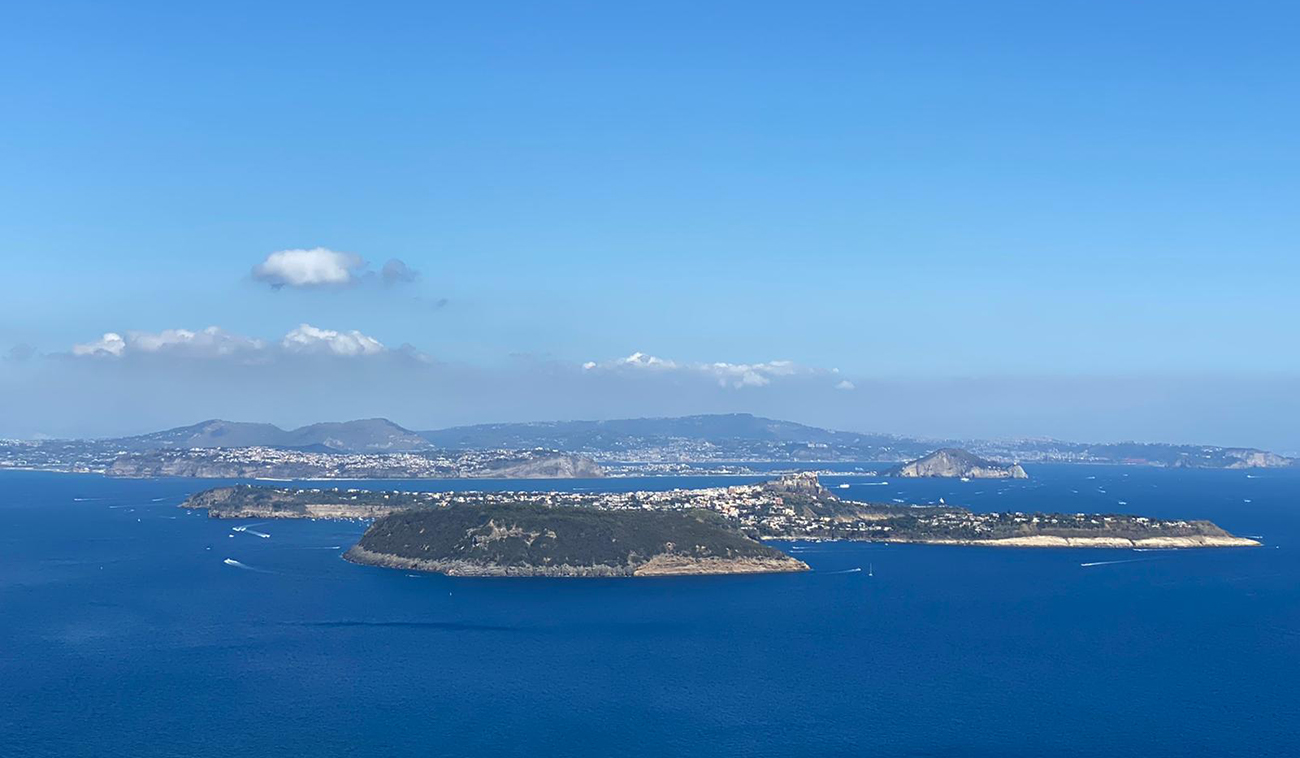
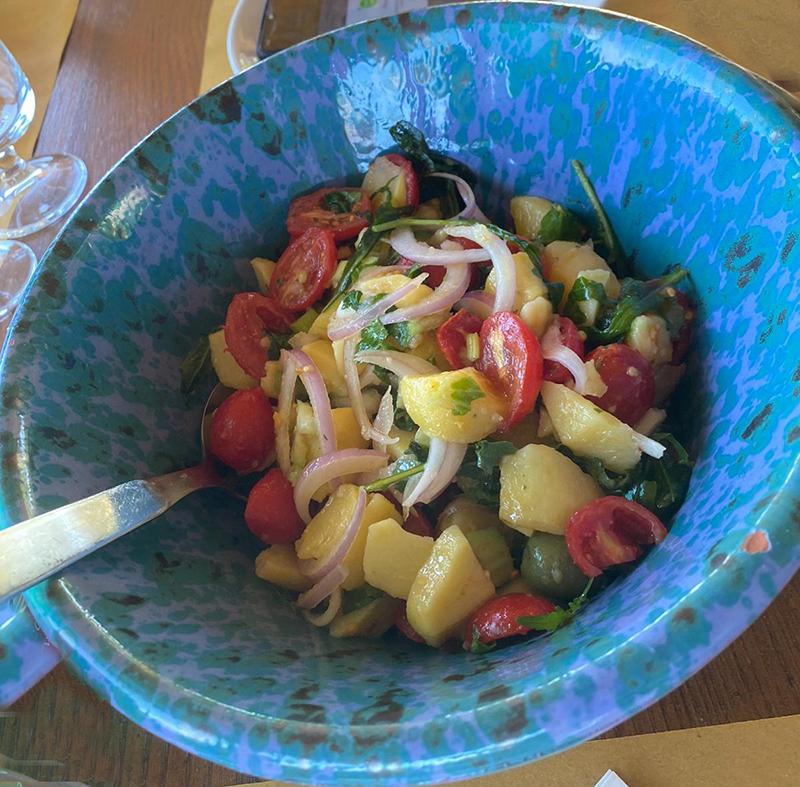
At the tower I have discovered this year with satisfaction, there is an atmosphere suspended over the incredible landscape, especially at night, which is lost to the east beyond Punta Campanella and Capri; and there is a rustic cuisine which relies on its own productions starting with quite a lot of antipasti (from the seasoned olives to broad beans, from the harvest salad to the aubergines parmigiana) and genuine, that the common language defines as “homemade”. Everything that is brought to the table comes from the gardens and from the surrounding vineyards, among which orchards, gardens and farm shelters.
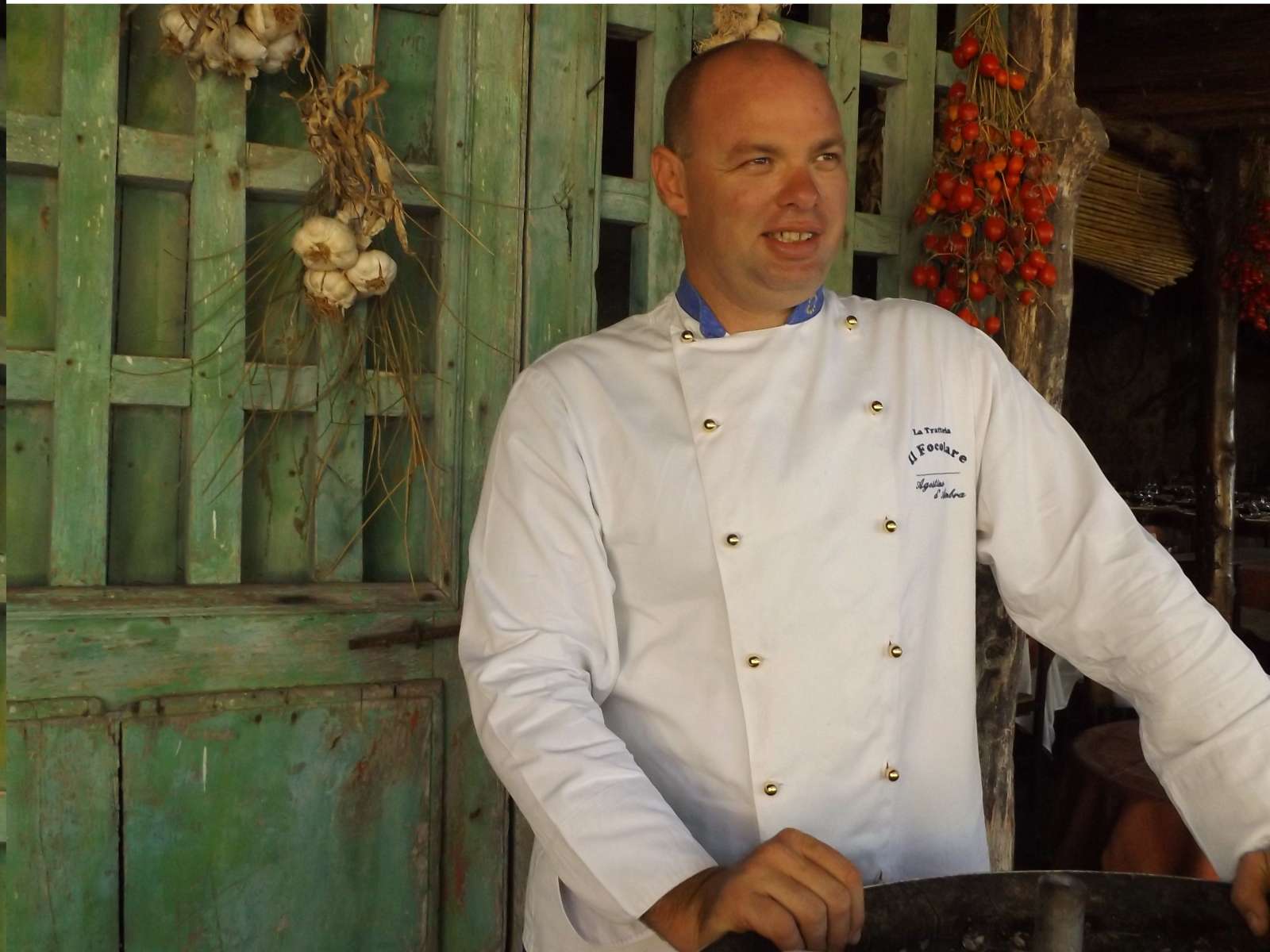 Agostino D’Ambra, at the trattoria Il Focolare (in the wood of the Cretaio - tel. 081.902944) gave me the other pleasant chance, and it was obvious. At the Focolare, I have to admit, I have always felt… at home, and I perfectly know the details of a pioneering vocation transformed into a borderless success. Now, I am lost, instead, among the flashbacks of the endless chats with Riccardo, the greatest author of the recovery of the agricultural culture in gastronomy… Riccardo is no longer here. But the successors of the mythical “flavours worker” know how to do it, and this is reassuring me. Under the sign of the rabbit.
Agostino D’Ambra, at the trattoria Il Focolare (in the wood of the Cretaio - tel. 081.902944) gave me the other pleasant chance, and it was obvious. At the Focolare, I have to admit, I have always felt… at home, and I perfectly know the details of a pioneering vocation transformed into a borderless success. Now, I am lost, instead, among the flashbacks of the endless chats with Riccardo, the greatest author of the recovery of the agricultural culture in gastronomy… Riccardo is no longer here. But the successors of the mythical “flavours worker” know how to do it, and this is reassuring me. Under the sign of the rabbit.